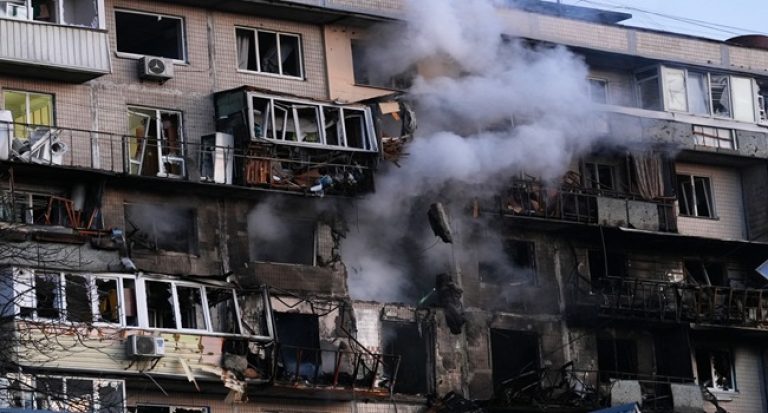Does the coronavirus that causes COVID-19 spread through tiny aerosol particles in the air? Or is the main route of transmission the droplets people release when they talk or breathe?
The answer may affect what precautions people should take to protect themselves from the virus.
A group of 239 scientists say airborne transmission is a major factor. According to The New York Times, they are urging the World Health Organization to acknowledge the issue and make its recommendations on infection control more stringent.
They say WHO is lagging behind the science. But the question is not entirely settled, and other experts defend the agency’s response.
This is not the first time the global health body has come under fire during the COVID-19 pandemic.
Late last month, it changed the timeline of the early days of the pandemic to clarify that it first found out about the novel coronavirus from Chinese news reports, not the Chinese government.
“This could be taken as (not very) veiled criticism of Chinese lack of transparency/cooperation with WHO in these early days of the epidemic,” Georgetown University global health assistant research professor Claire Standley wrote in an email to VOA, “and is something of an about-face from WHO’s prior staunch and steadfast support of the Chinese response.”
Republican critics, including President Donald Trump, have said WHO is too close to Beijing. They say the Chinese government has not provided information in violation of WHO regulations. The Trump administration said it is cutting off funding to the organization.
In June, WHO’s COVID-19 technical lead Maria Van Kerkhove was accused of muddying the waters when she said asymptomatic transmission was “very rare.”
Research shows patients do spread the virus before they show symptoms. A subtle difference in terminology — the difference between “asymptomatic” people who never show symptoms and “presymptomatic” people who are not showing symptoms yet but eventually do — seems to have contributed to the confusion.
But some critics say WHO is setting the bar too high for evidence, and they say that is playing out in the discussion over aerosol transmission, as well.
“My take is the evidence is really quite good,” Harvard Global Health Institute Director Ashish Jha said. “But for whatever reason, it doesn’t seem to be meeting their threshold for certainty, which I think is clearly too high.”
Patients have caught COVID-19 from singers at a choir practice and from an infected person upwind in an air-conditioned restaurant, examples that experts say point to aerosol transmission.
Jha said WHO may be thinking about what the implications would be in low- and middle-income countries, where more stringent infection control could be costly.
However, WHO is “not thinking about the cost of getting it wrong,” Jha added.
“If those places don’t have good ventilation, if people are not wearing the right kind of masks, then I do worry that you’re going to see infections on the floor to doctors and nurses, and you’re going to see spread throughout the hospital,” he said.
Health experts are still vigorously debating the role of aerosol transmission, and not everyone agrees that stepping up recommendations is a good idea.
“I think that’s a completely unrealistic ask, and I don’t think the epidemiology supports it,” Johns Hopkins Center for Health Security epidemiologist Jennifer Nuzzo said in an interview.
Some studies have found coronavirus genetic material lingering in air samples in hospitals, but they have not found viable, infectious viruses. One recent study concludes that respiratory droplets, not aerosols, were most likely responsible for spreading the virus from an infected patient to several health care workers at a U.S. hospital.
For most people, Nuzzo said, the debate does not make much difference.
“We already know that sitting and having prolonged contact in indoor environments where there’s poor air quality, where people are engaged in talking for extended periods of time — that’s a risky environment to be in,” she said. “Does that mean that you need to wear an N95 mask in that environment? I don’t think we have any evidence to suggest that that’s necessary.”
N95 masks are the highest-grade medical mask that block the most virus particles. Cloth masks are less effective but are increasingly recommended as the best way that most people can help slow the spread of the virus.
WHO “often finds itself caught between a rock and a hard place — push forward too aggressively with recommendations based on preliminary evidence, and it faces criticism for not being sufficiently science- and evidence-based,” Georgetown’s Standley said.
But if it “waits for a conclusive body of scientific data, it is accused of being overly risk-adverse and obfuscating when decisive action is needed,” she added. (VOA)









571441 974584We maintain your page. Watch it offline once again soon. Really intriguing write-up. 20230
506353 281215Dead written topic matter, Genuinely enjoyed reading by way of . 490612